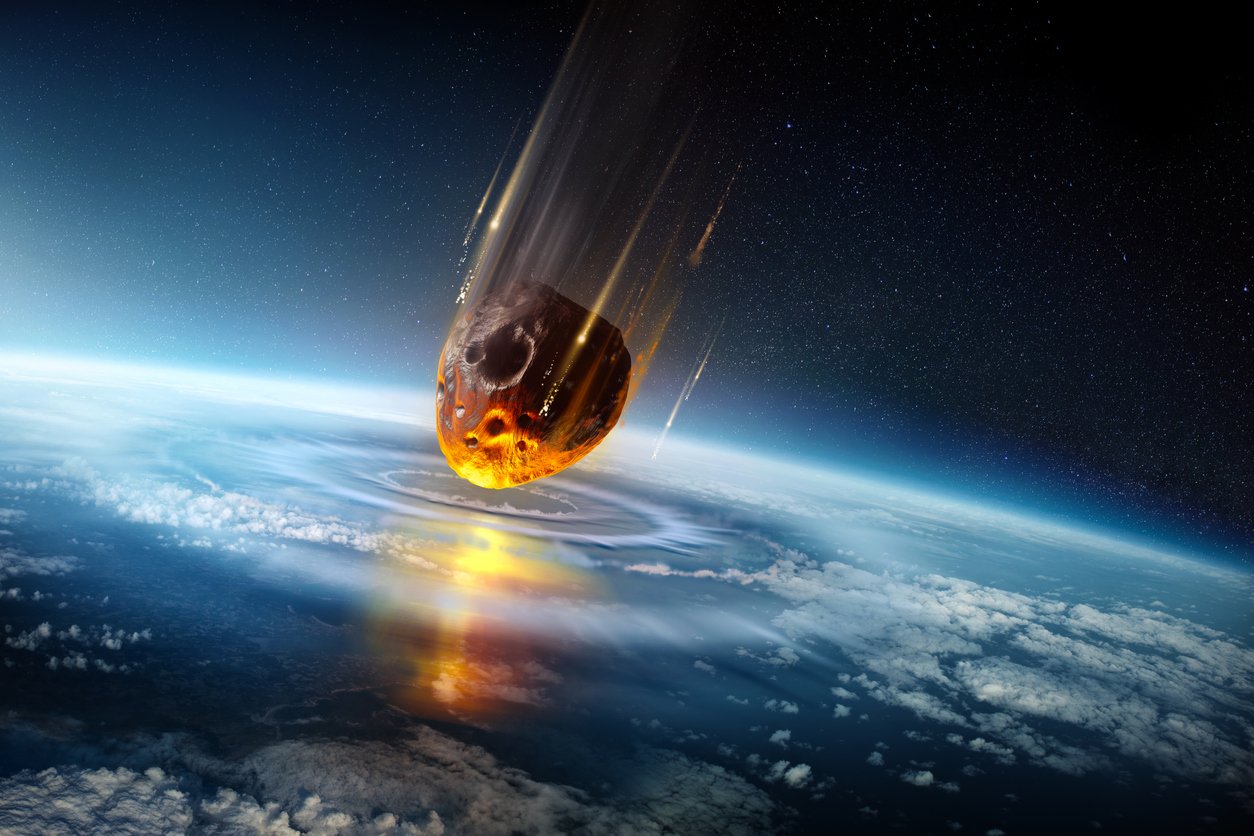When Celestial Bodies Become Cosmic Bombs: In our October issue, Bild der Wiessenschaft presents new findings about collisions in the Solar System and how the Earth formed. The focus is on the giant impact hypothesis, the so-called Late Heavy Bombardment and two impact craters on German soil.
At first, a loose disk of matter orbited our young sun, then the matter conglomerated to form larger and larger structures, until planets and moons appeared. Simply put, the large structures of our cosmic home system were formed in this way. But the process also left countless smaller and larger debris: planets and comets buzz through the solar system and can change their orbits over and over again as they collide with each other. So they can enter a collision course with the planets and moons. Especially in the youth of our solar system, this led to many collisions. But there are still many potential impacts in space, as the effects of devastating effects in recent geological history show.
In the first essay for the three-part title topic, Bdw author Thorsten Dambeck focuses on two geological craters in southern Germany: the Nördlinger Ries and the smaller Steinheimer Basin. The two traumatic scars are not far apart and were formed about 15 million years ago. So far, it was assumed that an orb and its little moon had shattered in the area at that time. But as Dambeck reports in “Hell in Germany’s Primeval Times,” there are also indications that there were two independent events that once devastated the region.
Explosions in Earth’s History
Dambeck then takes a deeper look into Earth’s history and deals with a stylized event of much greater proportions: Today it is assumed that Earth collided with another planet shortly after its formation. According to the so-called giant impact hypothesis, our moon emerged from the rubble. Thea became the name of the collision partner. In the article “Thea, Highly Wanted,” the author reported on the findings that the planet was much larger than previously assumed. Isotope analyzes also indicate the origin of Thea. Parts of the mysterious celestial body may still be dormant deep in the earth, according to the article.
Finally, Dambeck deals with the extent and time course of cosmic bombardment in the early history of the Earth. There are indications that about four billion years ago there was a phase with a large number of impacts on the Moon and the Earth. This era is known as the “Late Heavy Bombardment”. But as the author says, doubts are growing about previous assumptions: did a flood of cosmic influences occur when the first life on Earth was in motion? The article also discusses the possible reason for the increased barrage of bombs. According to the new findings, it is questionable whether changes in the orbits of Jupiter and Saturn caused the effects.
The cover topic “Cosmic Collisions” can be found in the October issue of bild der Wissenschaft, which will be available in stores from September 21, 2021.

“Alcohol buff. Troublemaker. Introvert. Student. Social media lover. Web ninja. Bacon fan. Reader.”







More Stories
Skin rash after eating asparagus? What could be behind it?
Conjunction of the Moon and Mars
Skin rash after eating asparagus? What could be behind it?